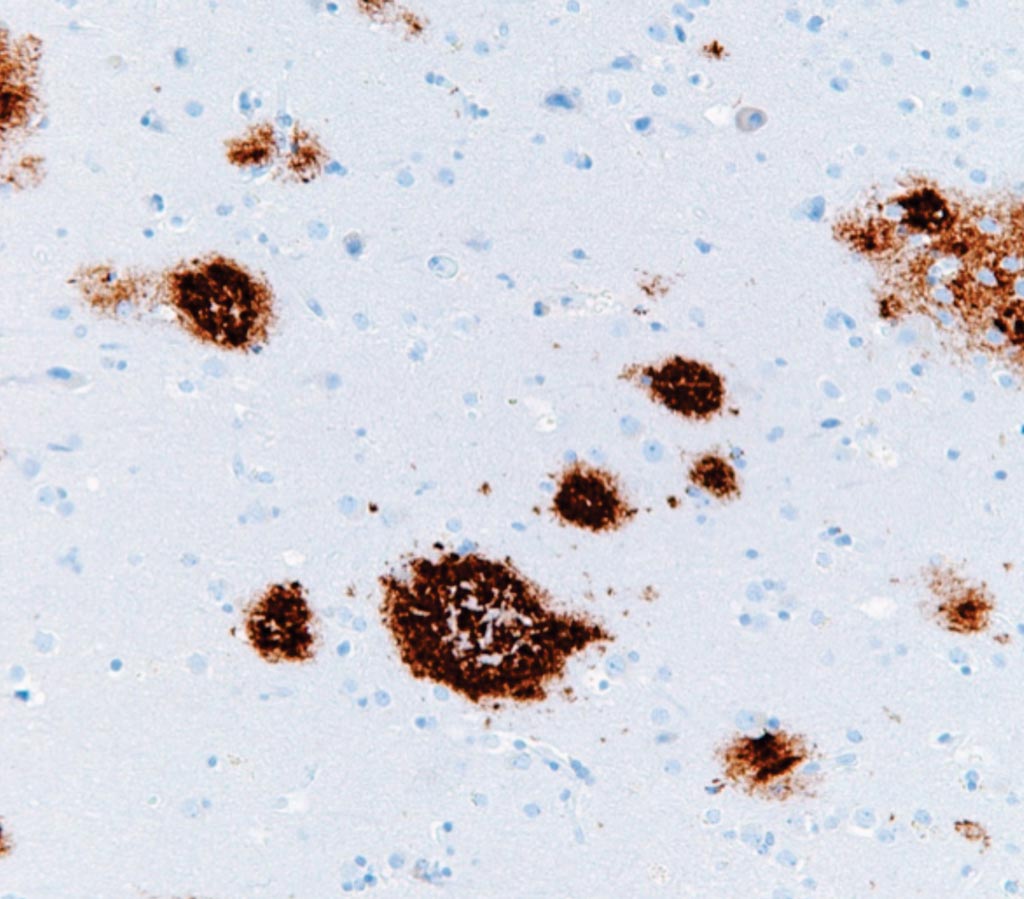Subthreshold Amyloid Predicts Tau Deposition in Aging
By LabMedica International staff writers
Posted on 10 May 2018
The progressive nature of Alzheimer's disease (AD) necessitates the earliest possible detection of pathological or cognitive change if disease progression is to be slowed. The rate at which the protein beta-amyloid (Aβ) accumulates into the sticky plaques associated with Alzheimer's disease (AD) is already slowing by the time a patient would be considered to have preclinical AD.Posted on 10 May 2018
Determining how early to intervene is a central challenge in slowing the progression of AD. Clinical trials of drugs for lowering amyloid levels typically involve individuals who do not yet have symptoms but are considered "amyloid positive" and at risk for developing AD. These trials have been largely unsuccessful, perhaps because they begin too late.

Image: A micrograph of cerebral amyloid angiopathy with senile plaques in the cerebral cortex consistent of amyloid beta, as may be seen in Alzheimer disease (Photo courtesy of Nephron).
Scientists at the University of California, Berkeley (Berkeley, CA, USA) studied 71 healthy men and women between the ages of 61 and 88 over a five-year period. They used longitudinal [11C] Pittsburgh Compound B (PIB) PET and neuropsychological assessment to investigate the earliest changes in AD pathology and how it affects memory in cognitively normal older humans. They used [18F] AV-1451 PET at the end of the observation period to measure subsequent tau deposition in a subset of the sample of 37.
The investigators found evidence for an inverted-U relationship between baseline Aβ and Aβ slope in asymptomatic older adults, suggesting a slowing of Aβ accumulation even in cognitively normal adults. In participants who were nominally amyloid negative, both the rate of amyloid accumulation and the baseline levels of Aβ predicted early tau deposition in cortical Braak regions associated with AD. Amyloid measures were only sensitive to memory decline as baseline levels of Aβ increased, suggesting pathological accumulation occurs before impacting memory.
The authors concluded that it appears rates of amyloid accumulation already begin to slow in preclinical AD, suggesting it is a relatively late stage of AD progression. Thus, it is crucial to examine older adults early, before amyloid levels have saturated, to intervene to slow disease progression. These findings support the necessity of early intervention with amyloid lowering therapies even in those who are amyloid negative. The study was published on April 23, 2018, in the Journal of Neuroscience.
Related Links:
University of California, Berkeley













